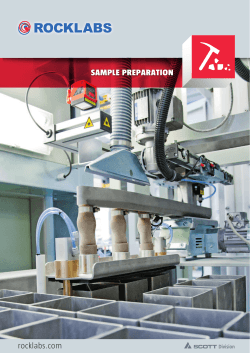
Visualization and Data Mining techniques
Visualization and Data Mining
techniques
ByGroup number- 14
Chidroop Madhavarapu(105644921)
Deepanshu Sandhuria(105595184)
Data Mining CSE 634
Prof. Anita Wasilewska
1
References
http://coblitz.codeen.org:3125/citeseer.ist.psu.edu/cache/papers/cs/10335/ftp:zSzzSzftp.cs.umn.edu
zSzdeptzSzuserszSzkumarzSzdatavis.pdf/ganesh96visual.pdf
http://www.ailab.si/blaz/predavanja/ozp/gradivo/2002-Keim-Visualization%20in%20DMIEEE%20Trans%20Vis.pdf
http://www.geocities.com/anand_palm/
http://citeseer.ist.psu.edu/cache/papers/cs/27216/http:zSzzSzwwwusers.cs.umn.eduzSzzCz7EctluzSzPaperTalkFilezSzits02.pdf/shekhar02cubeview.pdf
http://www.cs.umn.edu/Research/shashi-group/
http://www.cs.umn.edu/Research/shashi-group/Book/sdb-chap1.pdf
http://www.cs.umn.edu/research/shashi-group/alan_planb.pdf
http://coblitz.codeen.org:3125/citeseer.ist.psu.edu/cache/papers/cs/27637/http:zSzzSzwwwusers.cs.umn.eduzSzzCz7EpushengzSzpubzSzkdd2001zSzkdd.pdf/shekhar01detecting.pdf
2
Motivation
Visualization for Data Mining
• Huge amounts of information
• Limited display capacity of output devices
Visual Data Mining (VDM) is a new approach for
exploring very large data sets, combining traditional
mining methods and information visualization techniques.
3
Why Visual Data Mining
4
Why Visual Data Mining
5
VDM Approach
VDM takes advantage of both,
The power of automatic calculations, and
The capabilities of human processing.
Human perception offers phenomenal abilities
to extract structures from pictures.
6
Levels of VDM
No or very limited integration
Corresponds to the application of either traditional information
visualization or automated data mining methods.
Loose integration
Visualization and automated mining methods are applied
sequentially.
The result of one step can be used as input for another step.
Full integration
Automated mining and visualization methods applied in parallel.
Combination of the results.
7
Methods of Data Visualization
Different methods are available for visualization of data
based on type of data
Data can be
Univariate
Bivariate
Multivariate
8
Univariate data
Measurement of single quantitative variable
Characterize distribution
Represented using following methods
Histogram
Pie Chart
9
Histogram
10
Pie Chart
11
Bivariate Data
Constitutes of paired samples of two quantitative
variables
Variables are related
Represented using following methods
Scatter plots
Line graphs
12
Scatter plots
13
Line graphs
14
Multivariate Data
Multi dimensional representation of multivariate
data
Represented using following methods
Icon based methods
Pixel based methods
Dynamic parallel coordinate system
15
Icon based Methods
16
Pixel Based Methods
Approach:
Each attribute value is represented by one colored pixel
(the value ranges of the attributes are mapped to a
fixed color map).
The values of each attribute are presented in separate
sub windows.
Examples:
Dense Pixel Displays
17
Dense Pixel Display
Approach:
Each attribute value is represented by one colored
pixel (the value ranges of the attributes are mapped
to a fixed color map).
Different attributes are presented in separate sub
windows.
18
Visual Data Mining: Framework and
Algorithm Development
Ganesh, M., Han, E.H., Kumar, V., Shekar, S., &
Srivastava, J. (1996).
Working Paper. Twin Cities, MN: University of Minnesota,
Twin Cities Campus.
19
References
http://coblitz.codeen.org:3125/citeseer.ist.psu.edu/cache/papers/cs/10335/ftp
:zSzzSzftp.cs.umn.eduzSzdeptzSzuserszSzkumarzSzdatavis.pdf/ganesh96visual
.pdf
http://www.ailab.si/blaz/predavanja/ozp/gradivo/2002-KeimVisualization%20in%20DM-IEEE%20Trans%20Vis.pdf
http://www.geocities.com/anand_palm/
20
Abstract
VDM refers to refers to the use of visualization techniques in Data
Mining process to
Evaluate
Monitor
Guide
This paper provides a framework for VDM via the loose coupling of
databases and visualization systems.
The paper applies VDM towards designing new algorithms that can
learn decision trees by manually refining some of the decisions made
by well known algorithms such as C4.5.
21
Components of VQLBCI
The three major components of VQLBCI are
Visual Representations, Computations and Events.
22
Visual Development of Algorithms
Most interesting use of visual data mining is the
development of new insights and algorithms.
The figure below shows the ER diagram for
learning classification decision trees.
This model allows the user to monitor the quality
and impact of decisions made by the learning
procedure.
Learning procedure can be refined interactively
via a visual interface.
23
ER diagram for the search space of decision tree
learning algorithm
24
General Framework
Learning a classification decision tree from a training data
set can be regarded as a process of searching for the best
decision tree that meets user-provided goal constraints.
The problem space of this search process consists of
Model Candidates, Model Candidate Generator and Model
Constraints.
Many existing classification-learning algorithms like C4.5
and CDP fit nicely within this search framework. New
learning algorithms that fit user’s requirements can be
developed by defining the components of the problem
space.
25
General Framework
Model Candidate corresponds to the partial
classification decision tree. Each node of the
decision tree is a Model Atom
Search process is the process of finding a final
model candidate such that it meets user goal
specifications.
Model Candidate Generator transforms the current
model candidate into a new model candidate by
selecting one model atom to expand from the
expandable leaf model atoms.
Model Constraints (used by Model Candidate
Generator) provide controls and boundaries to the
search space.
26
Search Process
27
Acceptability Constraint
Model Constraints consist of Acceptability constraints,
Expandability constraints and a Data-Entropy calculation
function.
Acceptability constraint predicate specifies when a model
candidate is acceptable and thus allows search process to
stop. EX:
A1) Total no of expandable leaf model atoms = 0.
A2) Overall error rate of the model candidate <= acceptable error
rate.
A3) Total number of model atoms in the model candidate>=
maximal allowable tree size.
A1 is used in C4.5 and CDP
28
Expandability Constraint
An Expandability constraint predicate specifies
whether a leaf model atom is expandable or not.
EX:
C4.5 uses E1 and E2
CDP uses E2 and E3
29
Traversal Strategy
Traversal strategy ranks expandable leaf model
atoms based on the model atom attributes. EX:
Increasing order of depth
Decreasing order of depth
Orders based on other model atom attributes.
30
Steps in Visual Algorithm Development
No single algorithm is the best all the time,
performance is highly data dependent.
By changing different predicates of model
constraints, users can construct new
classification-learning algorithm.
This enables users to find an algorithm that works
the best on a given data set.
Two algorithms are developed : BF based on
Best First search idea and CDP+ which is a
modification of CDP
31
BF
This algorithm is based on the Best-First search
idea.
For Acceptability criteria, it includes A1 and A2
with a user specified acceptable error rate.
The Traversal strategy chosen is T3
In Best-First, expandable leaf model atoms are
ranked according to the decreasing order of the
number of misclassified training cases. (local error
rate * size of subset training data set)
The traversal strategy will expand a model atom
that has the most misclassified training cases,
thus reducing the overall error rate the most.
32
CDP +
CDP+ is a modification of CDP
CDP has dynamic pruning using expandability
constraint E3.
Here, the depth is modified according to the size
of the training data set of the model atom.
We set
B is the branching factor of the decision tree, t is
the size of training data set belonging to model
atom, T is the whole training data set.
33
Comparison of different classification learning
algorithms
34
Experiment
The new BF and CDP+ algorithms are compared
with the C4.5 and CDP algorithms.
Various metrics are selected to compare the
efficiency, accuracy and size of final decision trees
of the classification algorithm.
The generation efficiency of the nodes is
measured in terms of the total number of nodes
generated.
To compare accuracy of the various algorithms,
the mean classification error on the test data sets
have been computed.
35
Classification error for 10 data sets
36
Nodes generated for 10 data sets
37
Final decision tree size
38
Results/Conclusion
CDP has accuracy comparable to C4.5 while
generating considerably fewer nodes.
CDP+ has accuracy comparable to C4.5 while
generating considerably fewer nodes.
CDP+ outperformed CDP in error rate and number
of nodes generated.
Considering all performance metrics together,
CDP+ is the best overall algorithm.
Considering classification accuracy alone, C4.5P is
the winner.
39
Conclusion
Different datasets require different algorithms for
best results.
Diverse user requirements put different
constraints on the final decision tree.
The experiment shows that Interactive Visual
Data Mining Framework can help find the most
suitable algorithm for a given data set and group
of user requirements.
40
Data Mining for Selective Visualization of
Large Spatial Datasets
Proceedings of 14th IEEE International Conference on Tools with
Artificial Intelligence
(ICTAI'02), 2002.
Washington (November 2002), DC, USA,
Shashi Shekhar, Chang-Tien Lu, Pusheng Zhang, Rulin Liu
Computer Science & Engineering Department
University of Minnesota
41
References
http://citeseer.ist.psu.edu/cache/papers/cs/27216/http:zSzzSzwwwusers.cs.umn.eduzSzzCz7EctluzSzPaperTalkFilezSzits02.pdf/shekhar02c
ubeview.pdf
http://www.cs.umn.edu/Research/shashi-group/
http://www.cs.umn.edu/Research/shashi-group/Book/sdb-chap1.pdf
http://www.cs.umn.edu/research/shashi-group/alan_planb.pdf
http://coblitz.codeen.org:3125/citeseer.ist.psu.edu/cache/papers/cs/27
637/http:zSzzSzwwwusers.cs.umn.eduzSzzCz7EpushengzSzpubzSzkdd2001zSzkdd.pdf/shek
har01detecting.pdf
42
Basic Terminology
Spatial databases
Spatial mining
Mining of spatial databases
Spatial datawarehouse
Alphanumeric data + geographical cordinates
Contains geographical data
Spatial outliers
Observations that appear to be inconsistent with the
remainder of that set of data
43
Spatial Cluster
44
Contribution
Propose and implement the CubeView
visualization system
General data cube operations
Built on the concept of spatial data warehouse to
support data mining and data visualization
Efficient and scalable spatial outlier detection
algorithms
45
Challenges in spatial data mining
Classical data mining - numbers and categories.
Spatial data –
more complex and
extended objects such as points, lines and polygons.
Second, classical data mining works with explicit
inputs, whereas spatial predicates and attributes
are often implicit.
Third, classical data mining treats each input
independently of other inputs.
46
Application Domain
The Traffic Management Center - Minnesota
Department of Transportation (MNDOT) has a
database to archive sensor network.
Sensor network includes
about nine hundred stations
each of which contains one to four loop detector
Measurement of Volume and occupancy.
Volume is # vehicles passing through station in 5minute interval
Occupancy is percentage of time station is occupied
with vehicles
47
Basic Concepts
Spatial Data Warehouse
Spatial Data Mining
Spatial Outliers Detection
48
Spatial Data Warehouse
Employs data cube structure
Outputs - albums of maps.
Traffic data warehouse
Measures - volume and occupancy
Dimensions - time and space.
49
Spatial Data Mining
Process of discovering interesting and useful but
implicit spatial patterns.
key goal is to partially ‘automate’ knowledge
discovery
Search for “nuggets” of information embedded in
very large quantities of spatial data.
50
Spatial Outliers Detection
Suspiciously deviating observations
Local instability
Each Station
Spatial attributes – time, space
Non spatial attributes – volume, occupancy
51
Basic Structure – CubeView
52
CubeView Visualization System
Each node in cube – a visualization style
S - Traffic volume of station at all times.
TTD – Time of the day
TDW – Day of the week
STTD – Daily traffic volume of each station
TTD TDWS– Traffic volume at each station at different
times on different days
53
Dimension Lattice
54
CubeView Visualization System
55
CubeView Visualization System
56
CubeView Visualization System
57
Data Mining Algorithms for
Visualization
Problem Definition
Given a spatial graph G ={ S , E }
S - s1, s2, s3, s4……..
E – edges (neighborhood of stations)
f ( x ) - attribute value for a data record
N ( x )- fixed cardinality set of neighbors of x
) - Average attribute value of x neighbors
S( x ) - difference of the attribute value of each data
object and the average attribute value of neighbors.
58
Data Mining Algorithms for
Visualization
Problem Definition cont…
S( x ) - difference of the attribute value of each data
object and the average attribute value of neighbors.
Test for detecting an outlier
confidence level threshold θ
59
Data Mining Algorithms for
Visualization
Few points
First, the neighborhood can be selected based on a fixed
cardinality or a fixed graph distance or a fixed Euclidean distance.
Second, the choice of neighborhood aggregate function can be
mean, variance, or auto-correlation.
Third, the choice for comparing a location with its neighbors can
be either just a number or a vector of attribute values.
Finally, the statistic for the base distribution can be selected as
normal distribution.
60
Data Mining Algorithms for
Visualization
Algorithms
Test Parameters Computation(TPC) Algorithm
Route Outlier Detection(ROD) Algorithm
61
Data Mining Algorithms for
Visualization
62
Data Mining Algorithms for
Visualization
63
Data Mining Algorithms for
Visualization
64
Software
http://www.cs.umn.edu/research/shashigroup/vis/traffic_volumemap2.htm
http://www.cs.umn.edu/research/shashigroup/vis/DataCube.htm
65
Visualization and Data Mining
techniques
Thank you!!!!
66
© Copyright 2025









